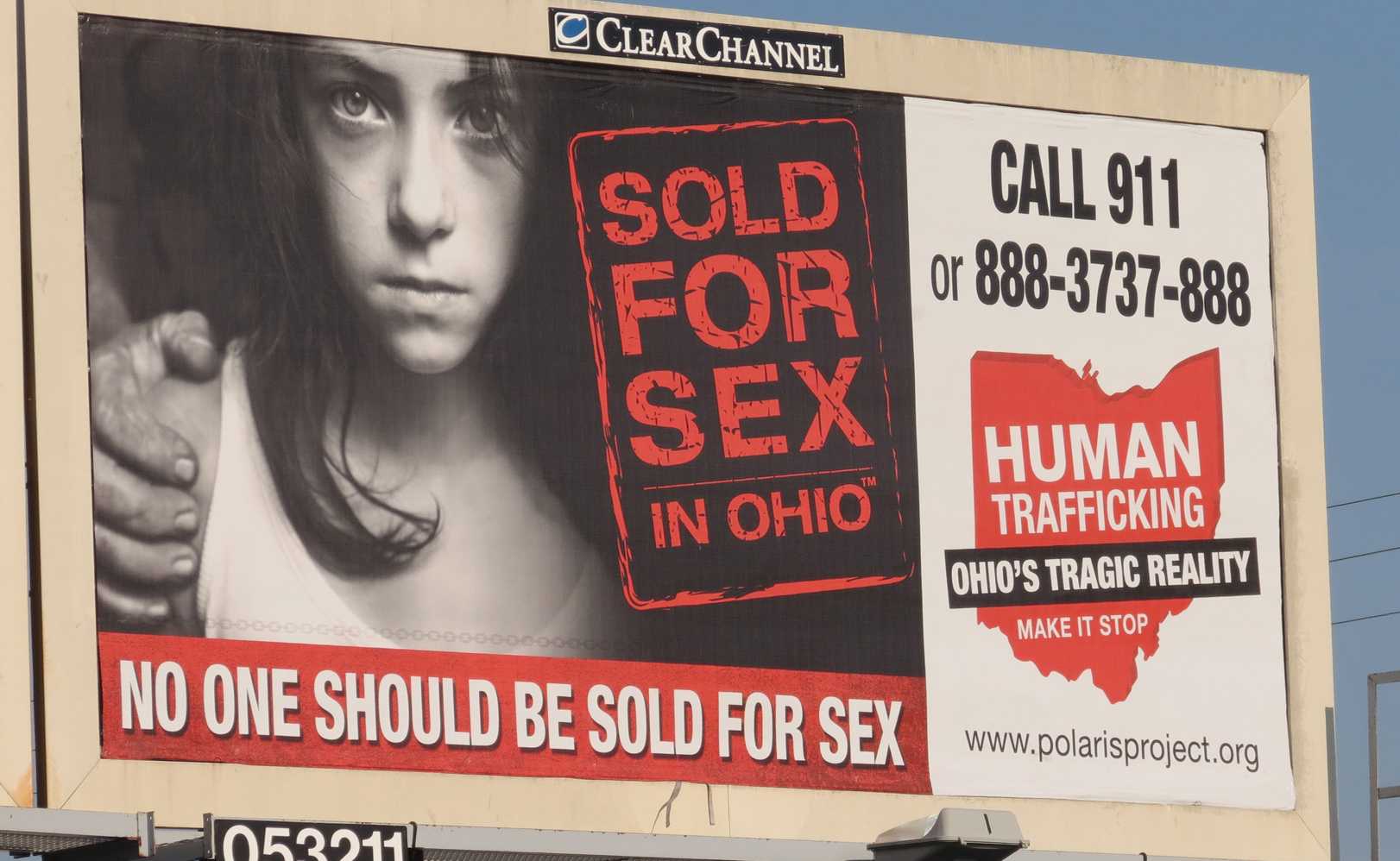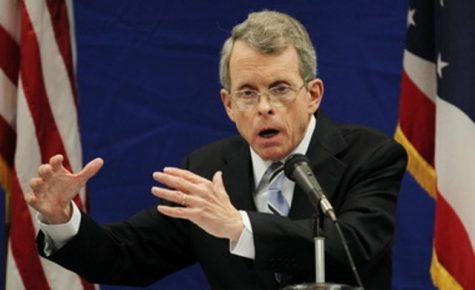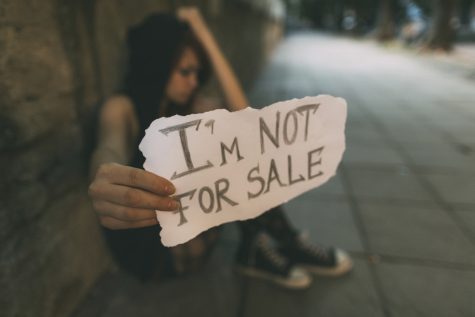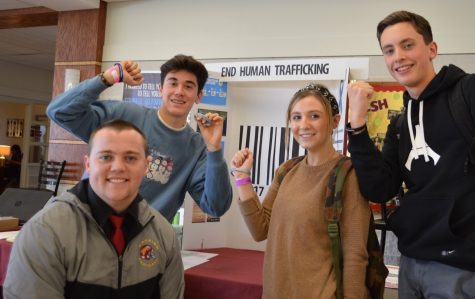Human Trafficking: The Horrors of Modern Day Slavery
This article, originally published last year, is the first of a three-part series linked below.
January 28, 2018
According to the National Human Trafficking Resource Center, Ohio has the fourth highest number of human trafficking cases in the nation. That’s the fourth highest in the nation. Nevertheless, many people do not grasp the severity of this issue. Junior Andrew Kobak admits, “Most high school kids do not know much about human trafficking and are oblivious to the fact that it is going on all around us.”
Lack of education regarding trafficking has spawned numerous misconceptions in our society. Many people believe that victims of human trafficking voluntarily choose their fate or are kidnapped and forced into slavery. Others believe that human trafficking occurs exclusively in third world, poverty-stricken countries. Falling into the trap of thinking of human trafficking as a far-removed issue is easy; in reality, it constitutes a subject about which all must be aware.
The United States Department of Homeland Security defines human trafficking as “the use of force, fraud, or coercion to obtain some type of labor or commercial sex act.” Human trafficking can be categorized in two ways: labor trafficking and sex trafficking.

Labor trafficking is very broad, as it occurs in a multitude of industries. Some of the most common places victims are trafficked in the United States include farms, factories, carnivals, hair salons, and restaurants. Desperate and poverty-stricken people are usually drawn in because of false job offers and burdensome debts. They are then forced into harsh working conditions and usually abused. Internationally, labor traffickers take advantage of workers to produce popular products, such as chocolate, clothing and smartphones at a cheap rate.
Sexual exploitation exists as the more prevalent form of trafficking in the United States. Victims’ “services” are most commonly sold online, on the streets, at highway rest stops and large sporting events such as the Super Bowl. According to the Polaris Project, an organization that works to combat human trafficking, the average age of sex trafficking victims is 19, while 44 percent are under 17 years of age. This statistic underscores that sex trafficking is a critical issue for high school and college age Ohioans.
Through my experience and training, I have seen that human trafficking has had a detrimental impact on all ages and socioeconomic backgrounds.
— Officer John Chrisopulos
The mere fact that so many of those exploited through sex trafficking are minors is the crux of many misconceptions. With so many child victims, how can this happen undetected? The answer is rooted in the methods of drawing young people in. The term “trafficking” is very deceptive because it implies that victims are transported or smuggled. While this does occur, most are “groomed” to be sold, rather than kidnapped. In the grooming process, traffickers first look for teens and young adults with unstable backgrounds who have a history of abuse or emotional neglect from important people in their lives. Traffickers often draw these victims in by posing as significant others, pretending to offer the love that had been missing from vulnerable children’s and teens’ lives.
After individuals are groomed, the trafficker introduces them into sexual exploitation. One way that the trafficker achieves this is through guilt. He might claim that in return for his love, the trafficked individual needs to do him a favor by engaging in prostitution and making money. Rather than sacrifice this newfound “love,” the person obliges. In addition, drugs such as cocaine and heroin are often forced on the victims.
Traffickers then introduce a quota that addicted individuals must meet through prostitution to get their own fix of the drug. At this point, victims are usually branded, or tattooed, by their traffickers, which marks them as property. These wayward minors and young adults are subsequently made to believe that they exist solely to serve their traffickers. Over a period of years, sometimes decades, victims endure a barrage of rapes and sexual batteries from countless numbers of strangers. To maintain control, the trafficker often threatens to harm the individuals’ families were they to run away.

I encourage your school to adopt a program that trains teachers, staff and students about this terrible crime.
— Ohio Attorney General, Mike DeWine
Some victims do physically escape from their captors; however, the emotional chains remain. Survivors are often left with a multitude of psychological scars, ranging from recurring nightmares to PTSD. Brandings also remind escapees of their past lives and make it hard for them to move on. Tragically, some victims are even charged with solicitation and prostitution despite the fact that they were forcefully trafficked. According to the Akron Beacon Journal, the Summit County Juvenile Court is attempting to change that since it “recently became the first juvenile court in Ohio to receive interim approval from the Ohio Supreme Court for a human trafficking program.” This program provides minors involved with human trafficking counseling, mentoring and drug treatment.
The Ohio Attorney General’s Office is prompting schools to become involved as well. When approached by The Pioneer in an exclusive interview, Ohio Attorney General Mike DeWine noted, “I encourage your school to adopt a program that trains teachers, staff and students about this terrible crime. Criminals who abuse and manipulate their victims operate in the dark, hoping to never be exposed for who they really are. However, as we continue to educate and empower Ohioans to learn about human trafficking, we can expose them and hold them accountable for their actions.”
Human trafficking is ubiquitous in the United States, especially in Northeast Ohio. Most people think that they run no risk; in reality, anyone can be trafficked. “Through my experience and training, I have seen that human trafficking has had a detrimental impact on all ages and socioeconomic backgrounds,” commented Officer John Chrisopulos of the Brecksville Police Department.
Everyone can help eliminate this problem. In future articles, ways to do this will be discussed in detail. Until then, share this article with as many people as possible and start a discussion. Human trafficking can be prevented through awareness. Sharing this information could save a life.
This article was originally published on November 1, 2016.



Anne Pannent • Nov 3, 2016 at 6:11 pm
Great Article Alex! I recommend a movie out in theaters right now called Priceless, directed by For KING&COUNTRY a popular Christian band. Great movie about a true story of two sisters being trafficked and then rescued.